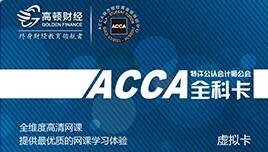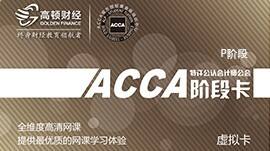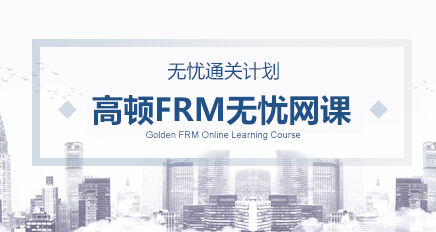2010年12月ACCA考试考官报告(P2)
General Comments
As normal,the paper dealt with a wide range of issues and accounting standards.The paper was demanding but candidates responded well resulting in a good pass rate.Candidates seem to have a good basic knowledge of accounting standards,and where the question requires this type of knowledge,no issue arises.However,there are few questions that require simply rote knowledge.Cash flow statements are well done for the most part,although any complexity and application seems to create a problem.Topical issues of a discursive nature are quite well done,indicating a good awareness of current issues.However,the computational parts are often poorly completed which again seems to indicate that application of knowledge is a problem.Additionally,some candidates do not write in sufficient detail on the discursive parts of the paper,and do not answer the question set.A general discussion of the relevant standard,however,is not normally required,although detailed discussion of the relevant section of the standard is required.A significant part of the paper comprises discursive elements and candidates need to develop skills in this area.
Candidates should,where possible,make sure that they show all workings and start each question on a new page.Time management issues seem to have been less prevalent in recent diets.There is some evidence that candidates spend disproportionate time on single question parts and hence not answering all the parts of the question.Time management is critical in passing the paper.When the time allocated to a question is over,candidates should move on and start a new question,leaving sufficient space to come back and finish the question if time allows.Candidates seem to have difficulty applying standards to the scenarios given in the questions.It is often obvious that candidates have the knowledge,but they are unable to use this knowledge in answering the question.The scenario can often give candidates help in answering the question.There are several key principles in each standard.Sometimes these are lost in the detail of the standard.These principles are the basis of most of the examination questions and candidates should concentrate on these principles.Candidates need to understand the standards,and not just learn their content.Understanding will lead to better application in the examination .There may is a misconception that the knowledge required to pass this paper can be gained in a short period just before the examination.This is not the case.The knowledge should be built up over a period of time and continuously consolidated.Candidates need to remember that the knowledge and application skills acquired from F7 (or the equivalent if exemptions are claimed) are pre-requisite to P2.
Specific Comments
Question One
This question required candidates to prepare a consolidated statement of cash flows for a group using the indirect method.The question required candidates to calculate goodwill on the acquisition of an entity where the group already held an investment in the entity.The goodwill needed to be calculated in order to ascertain the impairment of goodwill which was an adjustment to the operating activities of the group.Candidates performed well on this part of the question but often failed to take account of the deferred taxation adjustment.The question also required candidates to deal with the acquisition of the subsidiary in preparing the cash flow statement and to calculate the cash flows relating to an associate,PPE,non-controlling interest,deferred taxation,a defined benefit scheme,investment property,intangible assets and available for sale investments.This part of the question was well answered.There are some elements of a cash flow question which are relatively easy to answer and candidates generally obtained the marks in these areas.
The main areas where candidates found difficulties were:
•Ensuring that the purchase of the subsidiary was dealt with in calculating cash flows across the range of assets and liabilities
•The treatment of the past service costs relating to the defined benefit scheme
•The calculation of the cash flow on taxation, although many candidates made a good attempt at this calculation
Part b of the question required candidates to comment on the directors’ view that the indirect method of preparing statements of cash flows is more useful and informative to users than the direct method and to discuss the reasons why the directors may wish to report the loan proceeds as an operating cash flow rather than a financing cash flow commenting on whether there are any ethical implications of adopting this treatment.The first part of this element of the question was often poorly answered.In fact often it was not attempted.Currently there is a debate over whether the direct method should be used in preference to the indirect method and thus candidates should be aware of the advantages and disadvantages of the methods.It shows that candidates are not reading widely enough and are focusing on a narrow range of topical issues.The ethical part of the question was quite well answered although many candidates did not read the question fully enough as it stated that the directors were to receive extra income if the operating cash flow exceeded a predetermined target for the year.Part of the answer to the question was therefore contained in the scenario.This further exemplifies the points raised in the introduction to this report.
Question Three
This question dealt with real world scenarios taken from corporate financial statements.It is important that the exam paper reflects actual issues in financial statements and those candidates can apply their knowledge to these scenarios.
A public limited company which developed and operated airports was involved in litigation over an accident at one of the airports and the issues was whether a provision or contingent liability should be provided for.In this case it was important for candidates to justify their conclusion by discussing the nature of a provision and contingency.This part of the question was well answered although many candidates came to the incorrect conclusion.
In part b,candidates had to determine the relationship between an entity and a company that it had invested in.There was a need to discuss the relationship between the two entities in order to determine what the relationship constituted.Many candidates did not again use the scenario and in this question it was critical to discuss the facts in the question.However the question was well answered.
In part c the entity issued shares for the acquisition of franchise rights at a local airport and
showed irredeemable preference shares as equity instruments in its statement of financial position.Candidates had to determine the correct accounting treatment for these items.This part of the question was not well answered with candidates not understanding how to account for the irredeemable preference shares.Understanding the nature of equity and liability is a key element of the syllabus.
Overall the question was well answered.
Question Four
In part a,candidates had to comment on the different approaches which could have been taken by the International Accounting Standards Board in developing the ‘IFRS for Small and Medium-sized Entities’ explaining the approach finally taken by the IASB.Additionally candidates had to discuss the main differences and modifications to IFRS which the IASB made to reduce the burden of reporting for SME’s.Specific examples had to be given and also a discussion of how the Board had dealt with the problem of defining an SME.This part of the question was very well answered.The subject had been very topical and been the subject of articles in the accountancy press.
In part b candidates had to discuss how the certain transactions should be dealt with in the financial statements of an entity with reference to the ‘IFRS for Small and Medium-sized Entities’.The answers to this part of the question were quite variable.The three topic areas chosen were defined benefit,the purchase of an entity and research and development expenditure.Candidates were generally unclear about how to account for the transactions and many used full IFRS.The main issue was that candidates automatically assumed that the corridor approach would be used for defined benefit schemes which was incorrect.
This question was generally well answered.

相关阅读
2012年12月ACCA考试P4考试考官报告2013/06/19
2012年12月ACCA考试P3考试考官报告2013/06/19
2012年12月ACCA考试P2考试考官报告2013/06/19

















